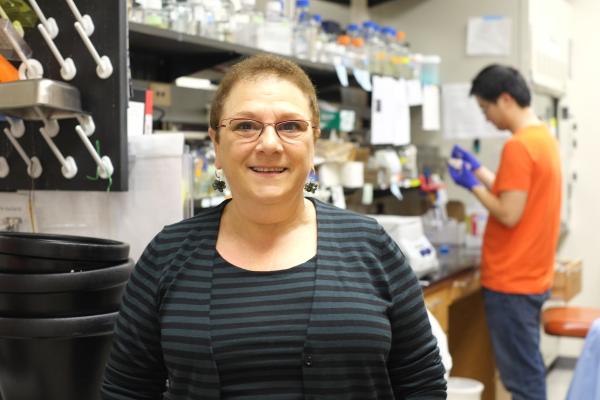Location, Location, Location: NIH Grant Funds Study of tRNA “Real Estate Business”

Molecular Genetics Professor Anita Hopper’s new four-year, $840,000 National Institutes of Health grant suports work expected to shed light on fundamental cellular processes affecting human health, such as gene mutations in transfer RNA (tRNA) biology, which cause cancer and metabolic and neuromuscular diseases. The project, "tRNA Processing and Nuclear-Cytoplasmic Dynamics," expands decades-long studies of functional tRNAs essential to decode genomes in all organisms and gene products.
Hopper, regarded internationally as a pioneer in the field of RNA biology, relates that, “in recent years it has become clear that the cell biology of tRNAs is important to eukaryotic (animals, plants, fungi) organisms.”
tRNAs play a key role in translation — the synthesis of proteins in a cell's ribosomes — by decoding messenger RNAs (mRNA). The genetic code of an mRNA directs a tRNA as to which amino acid it will carry to the ribosome for protein synthesis. The mutation of genes involved in tRNA biology can lead to a variety of diseases.
In 2015, Hopper’s lab published an influential study in the journal Genes and Development, detailing a genome-wide, unbiased screen in budding yeast to identify novel gene products involved in tRNA biology.
“We discovered candidates for assuring that tRNAs, transcribed in the nucleus, are efficiently exported to the cytoplasm, the site of protein production,” Hopper said. “Additionally, we detected novel gene products important for addressing how tRNA processing enzymes and maybe the tRNAs themselves are transported to the correct subcellular locations. Gene regulation in eukaryotic organisms really is a ‘real estate’ business, all about location, location, location — getting the right products to the right location, under the right regulatory conditions."
According to Hopper, the NIH-funded studies offer promise that the "real estate" mechanisms for tRNAs can be solved using budding yeast as a model organism and allow her to accelerate her quest to better understand gene regulation.
In addition to this enormous boost from NIH, work in Hopper’s lab has been furthered by three Pelotonia Fellowships supporting the individual work of three lab members: postdoctoral scholar Kunal Chatterjee, graduate student Yao Wan and undergraduate student Alicia Bao, who won the grant during her first year at Ohio State.
